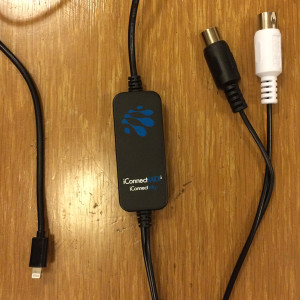In January, just as I sent out the last newsletter issue, I left to attend the Conference of Roman Catholic Cathedral Musicians in Hartford, CT. A collegial gathering of usually around 60 music directors and organists from across the country, I had not been able to attend for several years, so was really looking forward to catching up with the group this year.
Technology
Pipe organs have been around for many centuries. Technology has led to advances in the ways sound is created and the way it is controlled. While trying to avoid the pipe versus digital debate, the fact that this debate exists I believe has left pipe organs woefully behind in the technological advances of how we can control a pipe organ.
MIDI has been around for over thirty years and is perhaps the only piece of recent technology that might be included on a pipe organ. I suspect many organists that have MIDI never use the capacity because it is primarily seen as a way to add in other sounds to the organ. The organ at the Cathedral has MIDI ports, so when one of my cathedral colleagues told me that I could get a MIDI-to-lightning cable and connect my iPhone to the organ, I became very interested in what I might be able to do.
 The Cable
The Cable
I ordered the cable once I came home from the conference and anxiously waited for its arrival. With a recorder app on my phone (MIDI Tool Box), my first thought was that I could now record my improvisations and then take the files to the computer and transcribe them! Some people have spent hours upon hours listening to Pierre Cochereau‘s improvisations to transcribe them. Now with my iPhone, I would be able to have at least a rough transcription with a few mouse clicks!
The Trial and Demo
In addition to capturing the notes I played, the recorder app would also capture the registration and swell pedal movements! Even when studying repertoire, I was encouraged to record myself so that I could coach my own performances. Imagine being able to hear your improvisation again simply as a listener. That fabulous harmonic progression you stumbled into by mistake can now be transcribed, studied, and repeated! Check out the video below for a demonstration of how it works.
Beyond its usefulness for studying improvisation, this set up enables me to transfer pistons between consoles and opens some new possibilities for accompanying.
Conclusions
Pipe organs rely on very reliable technology from centuries past in order to produce sounds, but we don’t have to miss out on other technologies from the 21st century. (Bluetooth even opens the door to wireless connections!) MIDI is a great way to capture improvisations, and I encourage you to take advantage of it if you have it on the organ you play regularly.
Happy improvising,
Glenn
Newsletter Issue 55 – 2016 03 09
See the complete list of past newsletter issues here.
Sign up to receive future issues using the box to the right on this page.
